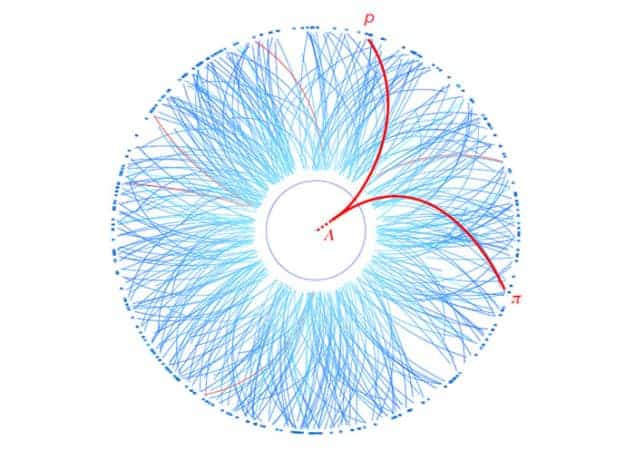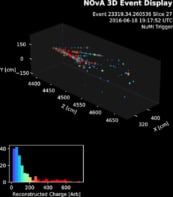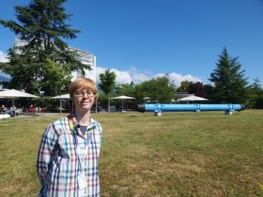
The fastest rotating fluid ever seen has been created by an international team of physicists working on the Relativistic Heavy Ion Collider (RHIC) at Brookhaven National Laboratory in the US. The record-breaking vortices are quark–gluon plasmas (QGPs), which are made by smashing gold ions together at energies up to 200 GeV.
QGPs can be thought of as tiny versions of the universe shortly after the Big Bang – and studying their rotation could provide insight into both the early universe and the strong force that binds quarks together.
A QGP is created in a high-energy collision when the quarks and gluons that make up protons and neutrons become de-confined and create a hot, dense fluid-like state of matter. These collisions are rarely perfectly head on, so the resulting QGP can be left spinning with extremely high angular momentum.
Intrinsic spins
The rotation of the QGP cannot be measured directly and instead physicists working on the STAR detector at RHIC look at hadrons that are emitted from the QGP as it rotates. The intrinsic spins of these particles tend to be aligned with the angular rotation of the QGP, so the challenge becomes how to measure their intrinsic spins. Fortunately one of these hadrons – the Lambda; hyperon – decays rapidly to a proton and a pion – and the proton tends to be emitted along the direction of the Λ hyperon’s intrinsic spin.
The team tracks the proton and pion as they travel through the STAR detector. Because the two particles have opposite electrical charge, they are deflected in opposite directions by the detector’s electric and magnetic fields. The result is a distinct set of tracks that can be traced back to the Λ hyperon (see figure).
Faster than superfluid helium
By studying the intrinsic spin of the ejected Λ hyperons, the team worked out that the QGPs spin at a rate of about 1022 rotations per second. This makes them the fastest fluid vortex ever observed. Their speed is many orders of magnitude faster than a tornado, Jupiter’s red spot and even the previous record holder – vortices in superfluid helium that have been clocked at 107 rotations per second.
Studying QGPs should provide important information about the state of the universe shortly after the Big Bang, when the cosmos was itself a plasma of quarks and gluons. After a short while, this primordial QGP cooled to form the familiar hadrons (protons and neutrons) that comprise most matter today – and physicists are very interested in knowing exactly how this phase transition occurs. By studying the rotational properties of QGPs made here on Earth, physicists should gain important insight into the collective properties of QGPs that drove this transition.
Magnetic measurements
STAR physicists are also looking forward to using Λ hyperon measurements to study the extremely strong magnetic fields that are expected to exist in a QGP, because these fields affect how particles are ejected from the QGP.
The study is described in Nature.



